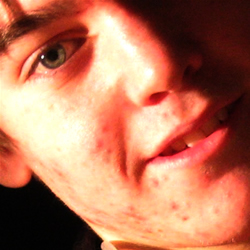Teenage Acne
Acne is most common during the teenage years. Indeed, most teenagers develop some form of acne. Teenage acne is an unpleasant condition which develops during a period of life when individuals feel most emotionally vulnerable. The fact that teenage acne is so common should not reduce the gravity with which the condition is treated.
Definition of Teenage Acne

Teenage acne is acne which develops in young people between the ages of thirteen and nineteen. In recent years, it has become increasingly common to see acne in the pre-teen age group, between the ages of eight and twelve. However, it is useful to restrict the use of the term ‘teenage acne’ to new cases of acne which develop at or after the age of thirteen, referring to cases of acne which persist from the pre-teen years into the teenage years as ‘persistent pre-teen acne’. Teenage acne is extraordinarily common, both in real world and medical terms. It is undoubtedly true that the majority of teenagers suffer from some form of acne, ranging from the very mildest cases, which manifest with just a few isolated papules and comedones, through to the severest cases, which produce an angry mass of spots and cystic lesions which cover the majority of the acne sufferer's body and may heal to leave permanent acne scarring.
Medical studies in the United Kingdom have shown that 50% of teenagers develop acne severe enough to require treatment. If all forms of acne are computed in the figures, including the very mildest cases, it is found that 90% of the teenage population suffer from acne. That means that of every 10 teenagers, 9 will suffer from some form of acne and 5 will have acne which is severe enough to justify acne treatment being administered. It could be said that acne is the norm for a teenager and that to avoid getting acne represents a lucky escape.
Causes of Acne in Teenagers
Nearly all teenage acne is attributable to acne of the adolescent clinical type. This means that the cause of nearly all teenage acne is the complex hormonal surge that occur around the time of puberty. The mechanism by which these hormonal changes cause spots is explained in detail in the section on the development of acne. There will be a small number of cases of teenage acne which will be attributable to clinical types of acne other than adolescent acne. Drug-induced acne, cosmetic-induced acne, occlusion acne and occupational acne can all occur during the teenage years, although the unusual appearance and distribution of spots usually alerts the patient to the fact that it is not a straightforward case of adolescent acne. It is certainly as well to be aware that not all cases of teenage spots are the result of adolescent acne and to seek medical advice in cases when teenage spots do not fit the typical pattern for teenage acne, or fail to respond to conventional acne treatments.
Significance of Teenage Acne

Even mild cases of acne involve the formation of unsightly, irritating spots that cause discomfort and are messy and unpleasant. In addition, cases of severe acne, particularly those which develop into cystic acne, may heal to leave permanent acne scars which can cause disfigurement to the face or body. All forms of acne, from the mildest to the most severe, have the potential to cause significant emotional or psychological disturbance which may disrupt the equilibrium of an emotionally vulnerable teenager. Indeed, the most severe type of psychological disturbance, acne dysmorphia, typically manifests itself in teens who have clinically insignificant forms of acne. Not all cases cause psychological disturbance or require treatment, but teenage acne needs to be taken seriously. Sufferers need to be treated sensitively, offered support and provided with sufficient medically sound information to be able to make informed